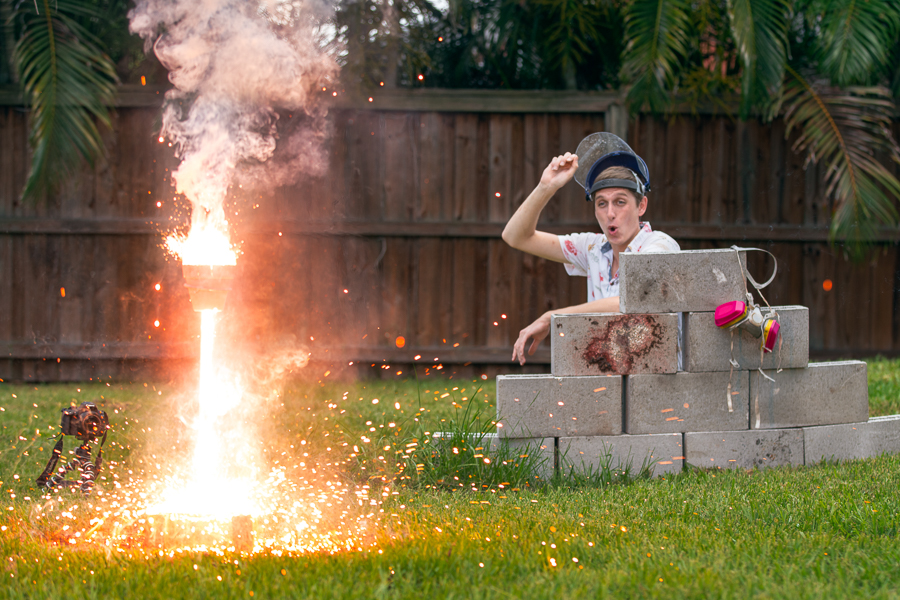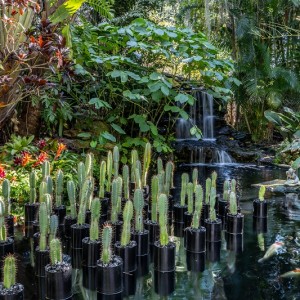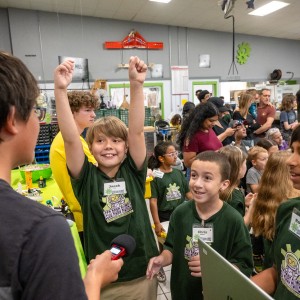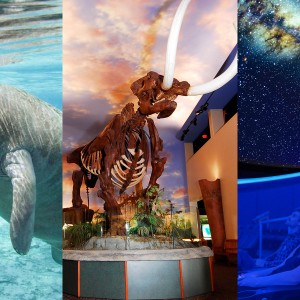It’s a sunny afternoon in a nondescript Sarasota neighborhood and someone’s about to dump liquid aluminum into their swimming pool. Decked out in his shorts, goggles and “protective” Hawaiian shirt, the man moves toward the water with a propane tank full of molten metal wedged precariously between the blades of a pair of garden shears. With the camera rolling, he’ll dump it in the water and run, not just to see what will happen, but kind of. “I was scared,” he says looking back. “I thought it would explode.” Meet Kevin Kohler or, as he’s known on YouTube, The Backyard Scientist.
A former chemistry student at University of South Florida, Kohler assumed his alter-ego roughly three and a half years ago, filming simple experiments out of his dorm room. “By explaining the science behind it, I make it more than entertainment,” says Kohler. “I bring something new and teach you something.” Early viewers would get a quick lesson in the diverse powers of Borax, which Kohler used to create green flames in his first video and later to grow crystals from a liquid solution. But that all changed when he threw a pile of molten aluminum into a swimming pool. It didn’t explode—instead cooling into glistening metal tears or pooling into a blobbish slab at the bottom—but it did raise some unsinged eyebrows. The video accumulated more than 10,000 views in two months and Kohler realized that The Backyard Scientist might be more than a hobby. The experiments got bigger. So did the audience. He threw molten salt into an aquarium (that one exploded). He set his pool on fire and threw liquid nitrogen over the flames. He made a flamethrower. With fans flocking and advertisers amassing, Kohler took an “indefinite break” from his studies at USF and The Backyard Scientist went professional.
Professional YouTubers are a diverse lot of digital entrepreneurs. Some use the site as a platform for sketch comedy, others for makeup tutorials or product reviews. For Kohler, it’s a means to reach like-minded science enthusiasts and spread the zeal for everyday experimentation. Uploading a new video every week, Kohler conducts eye-catching experiments using homemade implements and store-bought materials, and The Backyard Scientist plays out like a modern Bill Nye The Science Guy—empowering the viewer’s scientific curiosity by bringing the action out of the lab and into the home. The goal is always more science. “In my videos I don’t say, ‘Don’t try this at home,’” says Kohler. “I’d like to see more experimenting and people trying new things in general.” Big names behind programming such as Mythbusters have taken notice, sending Kohler inquiries about possible future appearances within the brand’s auxiliary projects.
Kohler isn’t alone in his science-minded sentiment for Sarasota and encouragement of experimentation. Art Center Sarasota waded into the fray this summer with #postdigital, an exhibit asking area artists to merge the boundaries of art and science by embracing digital technology as a medium or tool. At inception, some expressed doubt that such innovators could be found in Sarasota-Bradenton, but Art Center Sarasota Exhibitions Curator Dustin Juengel had faith. “People were offering outside artists and I said, ‘Not so fast. Let’s see what we have here first,’” says Juengel, who reached out to not only artists he knew, but community institutions similarly dedicated to instilling scientific and artistic exploration, such as The Faulhaber Fab Lab, Ringling College, New College, IMG Academy and Pine View School. The result filled three galleries, with artists incorporating digital technology as inspiration, adjunct and even material, the creator’s coopt transforming impedimenta into appurtenance. Between paintings read by apps, a spidery bouquet of flowers crafted from cords and metal and the pièce de résistance—a large-scale, wall-mounted installation of six digital monitors “hacked” and recoded to allow the viewer to manipulate shattered and fragmented shapes on screen—#postdigital embodies a sense of “playfulness” in its exploration, says Juengel. “There’s a lot of freedom and just joy in making,” he says, adding that it’s a hallmark of both art and science. “There is no line. It’s context.”
The Backyard Scientist agrees. In a new series of videos he shows parents and kids how to use simple science for art projects, such as drawing on glow-in-the-dark paint with purple laser pointers or etching metal with salt water and a car battery or growing copper coral. “I want to show people that it’s not just art and not just science,” he says, and he gets a kick out of the fan mail he receives, where kids hold their own homemade potato guns and smile. “I’d like to see more people do that and less stigma against trying new things and maybe getting hurt,” says Kohler. “You don’t have to be a scientist to enjoy science.”










